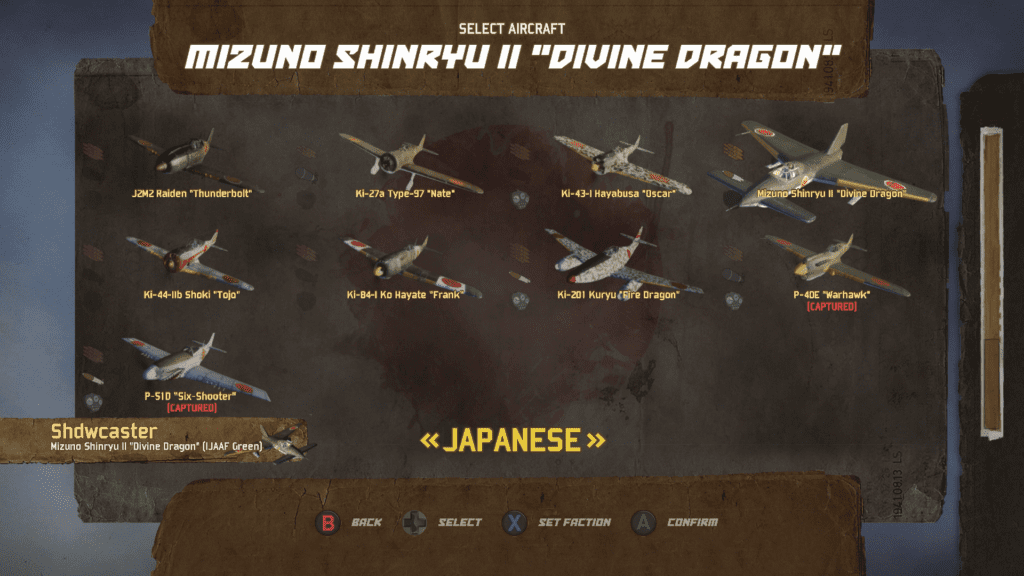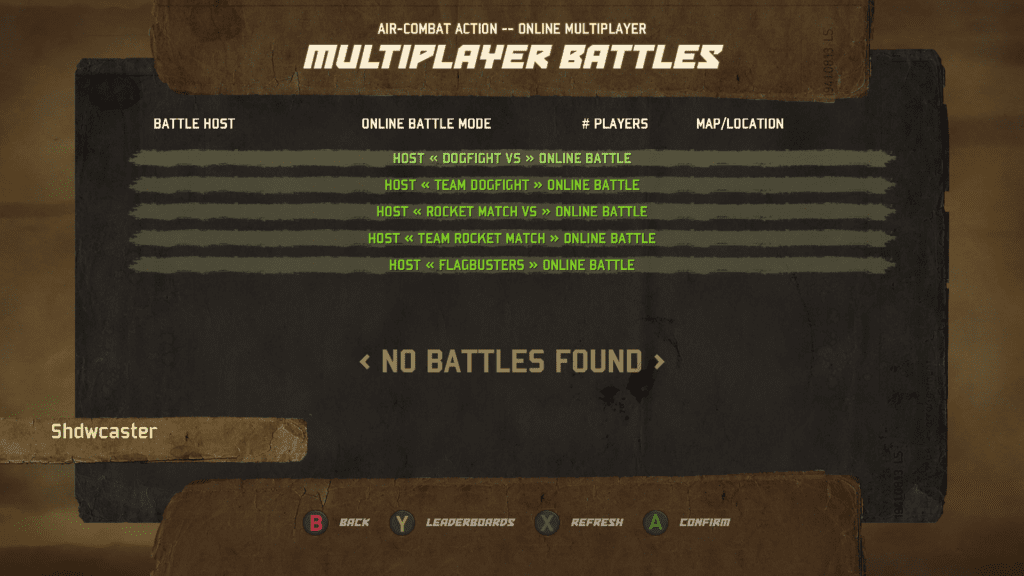The Flying Tigers. The name alone conjures images of Shark Nosed P-40s diving out of the sky, the sun at their backs, to ambush a doomed flight of Japanese Ki-27 “Nate” fighters or Ki-21 “Sally” bombers. In print and on the big screen, the adventures of the First American Volunteer Group (AVG) have been well represented over the years, but their virtual representations have generally been limited to a couple of missions in large survey campaigns. Now independent developer Ace Maddox aims to change that with Flying Tigers: Shadows Over China.
Flying Tigers: Shadows Over China (FTSOC) can best be considered a relaxed reality flight-action game in the vein of the Ace Combat or Blazing Angels series. Set in the China-Burma-India (CBI) theatre during 1940-1942, the main campaign hits many of the major battles during this tumultuous time, and focuses exclusively on the forces that were engaged in this area. Where some older games made the Flying Tigers a campaign stop or two as part of an implausible secret unit-type plot, FTSOC stays here, and gives significant time to the contributions of the Indian Air Force (IAF), and Royal Air Force (RAF) in addition to the titular First AVG.
The game has both single- and multiplayer elements. The main component in single-player is a campaign that is approximately three hours long, and covers major events in the CBI. A set of challenges provides further solo action, as does a dogfight mode where players can square off in their plane of choice against whatever opposition they specify. A free-flight option rounds out the single-player offerings, allowing players to explore the various environments and aircraft free from the risk of enemy fire.
Multiplayer contains five different modes. Team Dogfight, Dogfight (an every pilot for himself melee), Rocket Battle (unguided rockets only) in both versus and team modes, and Flagbusters (capture the flag). In the couple of games this review was able to join, network performance seemed fine, and player aircraft are both more lethal and more fragile than they are in single-player. Unfortunately, despite the game being released less than a week ago, server population is already almost at zero. As such, multiplayer isn’t really much of a highlight here, but would definitely be fun if a group wants to play a fun dogfight game.
The meat of the game really lies in the all too brief campaign. Focused as it is on historical battles and not with telling a specific story about some fictional character or unit, the player will often find himself hopping between multiple aircraft during the course of a single mission. For example, one mission started off manning the gun-turret of a Bristol Blenheim Mk IV bomber, shifting to a Hawker Hurricane IIb, jumping back into the Blenheim turret to defend during refueling, then finally ending in a Curtiss P-40E Warhawk to chase off the last waves of Japanese bombers and fighters. The in-game transitions provide a seamless switching from one aircraft to the next, and the mechanic provides a neat way of bringing in some interesting and rarely seen aircraft.
The free-flight, dogfight, and multiplayer modes offer a much wider selection of aircraft than the campaign, which restricts itself to aircraft in use from 1940-1942. Outside of the campaign, various American, British, and Japanese aircraft designs built through 1946 are included, up to the Lockheed P-80A Shooting Star and Nakijima Ki-201 early jet fighters.

High end Japanese aircraft (and “captured” American birds) available during MP and free flight modes.
As previously noted, the game can best be considered to fit in the flight-action genre. Two flight model options are included, Arcade and “Realistic”. Arcade mode couples yaw and roll together, and includes some pre-programmed maneuvers for use during dogfights. Realistic mode separates rudder and roll control, and allows full maneuvering to be used.
While I hesitate to knock the realism of a flight-model in a game which also includes bullet time, unlimited ammunition, engine boosts, there are a few distinct quirks in FTSOC’s realistic model that must be noted. Aircraft sometimes have a near magnetic attraction to the ground, and in one extremely odd case, this reviewer managed to get his aircraft stuck at high altitude in some sort of deep stall that ended in crashing into the ground tail first at around 45mph, with full power plus 20% running. Meanwhile an Immelman turn (a half-loop followed by a half-roll) always results in partial grey-out from simulated G-forces.
The soundtrack is another interesting issue that players will likely either love or hate. Comprised largely of heavy-metal style instrumentals, it doesn’t seem to fit with the mood of the game. A low-level torpedo run in a creaking Vickers Vildebeast makes a screaming electric guitar riff feel incredibly incongruous to the setting. It’s not that the soundtrack is bad, and in other setting, such as a modern jet fighter combat game, it would fit perfectly. However, the heavy drum beats and guitars feel incongruous in this setting.
The Xbox One version reviewed here includes the Paradise Island DLC which is available for separate purchase on the Steam version of the game. This integrated content adds a pair of seaplanes, the Japanese A6M2-N “Rufe”, and the American Curtiss SC-1 Seahawk. A lovely tropical island, complete with marine life (and a couple of achievements for landing and watching said marine life) completes the package, and is available in both free flight and as a multiplayer map.
What FTSOC offers, principally, is perhaps the best video game look at the China-Burma-India theatre ever done. That’s a low bar to clear, admittedly, but one that should be appreciated by fans of aviation games with access to either an Xbox One or a decent gaming PC. While the too-short campaign and lack of multiplayer community limit the game’s replayability, its budget price should attract anyone looking for a game that can be completed in a weekend. It also provides a great introduction to some rarely seen aircraft, and that can lead to a much longer weekend of Wikipedia wanderings.








